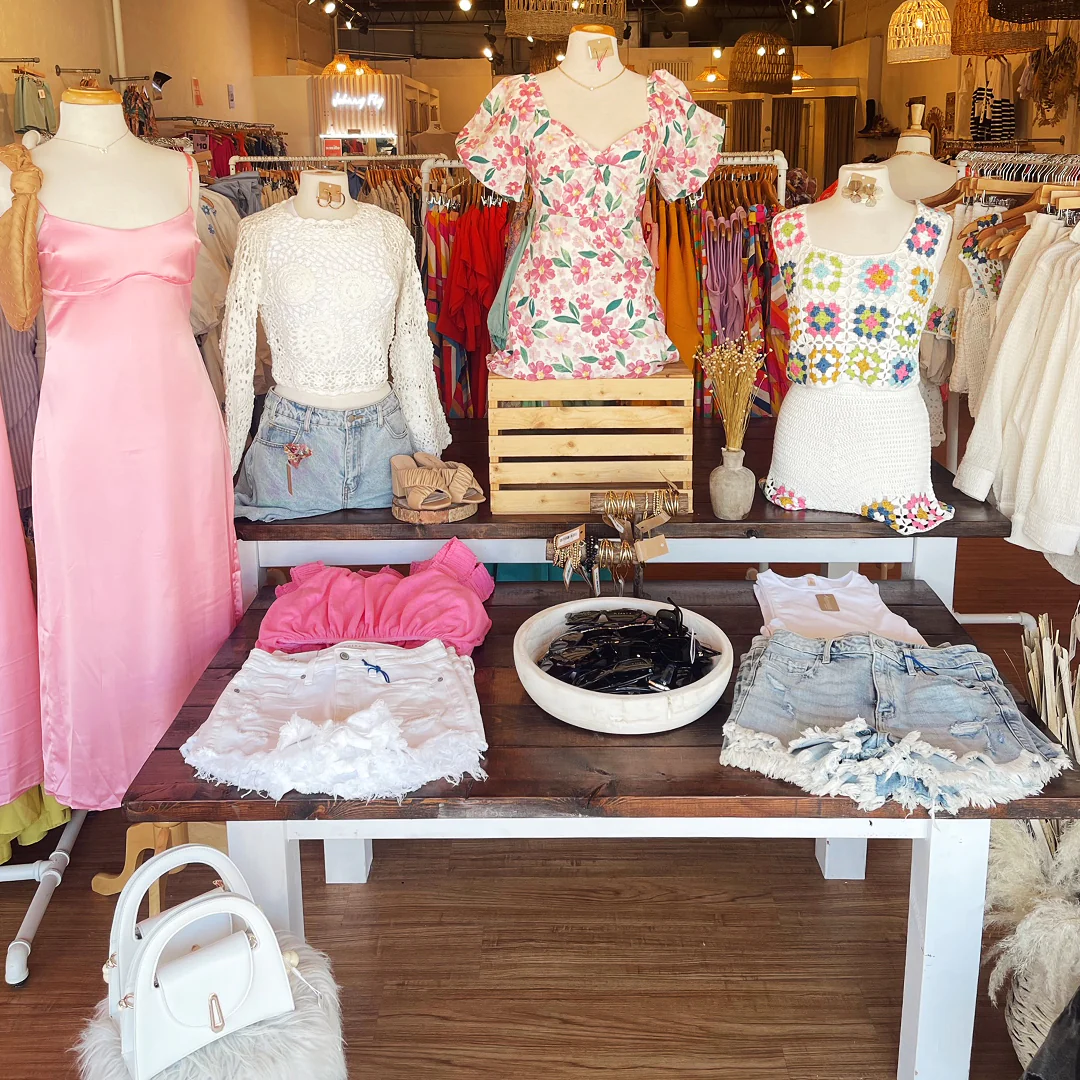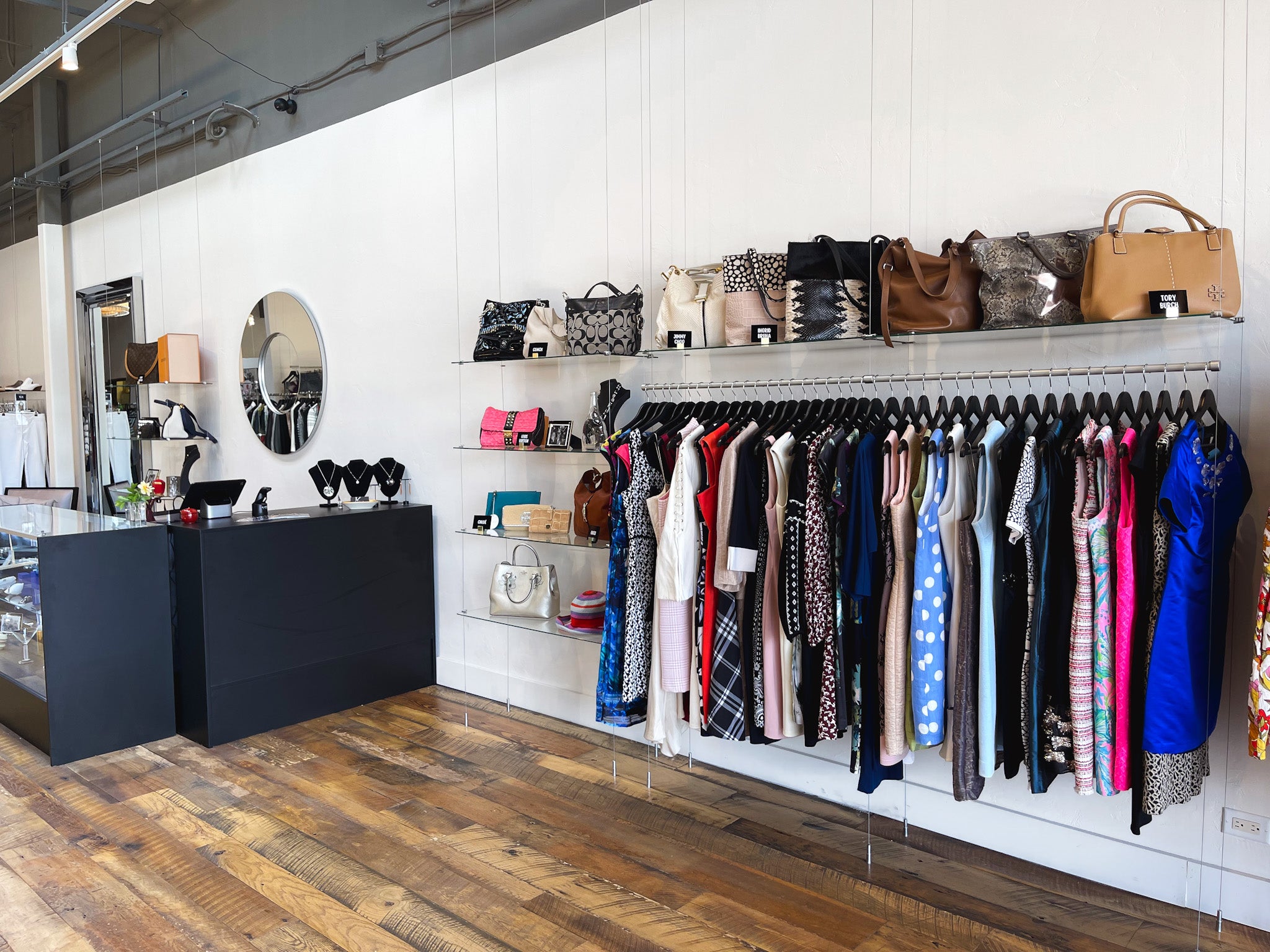A Newbie's Overview to Navigating the Boutique Fashion Scene
A Newbie's Overview to Navigating the Boutique Fashion Scene
Blog Article
Checking Out the Advancement and Impact of Clothes on Modern Style Trends
The advancement of garments has considerably influenced modern style fads, combining historical precedents with sophisticated technologies. Legendary numbers like Coco Chanel and Yves Saint Laurent transformed the fashion sector by presenting ideas that prioritize convenience and availability, which continue to resonate today.
Historic Fashion Influencers
In the tapestry of fashion background, specific figures have actually left an enduring mark, shaping the trends and designs that define whole ages. Coco Chanel, an advanced designer, redefined females's fashion by introducing comfy, stylish clothing that left from restrictive bodices. Her famous Chanel suit and little black outfit have become ageless staples in wardrobes worldwide. Christian Dior's post-war "New Look" in 1947, with its celebration of feminineness through complete skirts and cinched waists, noted a return to opulence and has actually proceeded to influence developers.
Elsa Schiaparelli is an additional pivotal figure, renowned for her progressive layouts that incorporated surrealist art, collaborating with Salvador Dalí to produce whimsical pieces that tested standard looks. Her innovative use of shade and vibrant patterns reverberates in contemporary fashion. Yves Saint Laurent, on the other hand, equalized haute couture with prêt-à-porter collections, bringing runway designs to the masses and establishing a criterion for modern ready-to-wear lines.
These enthusiasts, amongst others, not just revolutionized fashion in their times however likewise established sustaining trends that resonate in today's garment industry, supplying a structure whereupon modern-day developers remain to build and innovate. Their traditions highlight the value of creative thinking and bold in vogue's ever-evolving story.
Technical Innovations in vogue
Among the vibrant landscape of the style sector, technical innovations stand at the center of innovation, improving just how developers develop and customers engage with fashion. The integration of 3D printing has revolutionized design procedures, making it possible for developers to explore complicated structures and sustainable materials that were formerly impossible. This innovation helps with rapid prototyping, reducing waste and quickening manufacturing times.

Smart fabrics, embedding modern technology into materials, are additionally transforming the market. Innovations like self-cleaning and temperature-regulating textiles offer improved capability and comfort. Wearable innovation, including attributes like fitness monitoring and interaction, adds a new dimension to style, combining visual appeals with functionality.
Social Shifts and Design
As technical advancements continue to reshape the apparel industry, cultural changes are similarly prominent, redefining style and consumer preferences. Recently, the rise of social media platforms has accelerated the dissemination of global style fads, permitting diverse social impacts to exist together and assemble. This digital interconnectivity has facilitated the quick exchange of concepts, causing a much more comprehensive and eclectic interpretation of style that mirrors the diverse nature of contemporary society.
Social recognition and recognition have prompted developers to attract motivation from a broader range of ethnic and historic contexts, incorporating standard themes with contemporary aesthetics. This blend has resulted in style that resonates with a wider target market, promoting a feeling of identity and belonging across various demographics. Additionally, the raising need for personalization has actually driven brands to supply adjustable options, allowing consumers to share individuality while mirroring their cultural heritage.
In addition, moving social values have actually affected style, with inclusivity and diversity coming to be central styles. The industry has actually started to accept versions and influencers of various physique, ethnicities, and sex identities, difficult standard charm criteria. This change emphasizes the power of cultural shifts fit the future of fashion, as style comes to be a more authentic expression of collective and individual identification.
Sustainability and Modern Design
While the style market continues to progress, the necessary for sustainability has actually come to be significantly immediate, affecting contemporary style methods. The increase of slow fashion, which emphasizes top quality over quantity, encourages consumers to invest in timeless pieces rather than transient trends.
Furthermore, contemporary style is defined by its advancement in reducing waste helpful site and promoting circularity. Techniques such as zero-waste pattern cutting and 3D knitting are acquiring traction, allowing designers to produce garments with very little fabric wastefulness. In addition, brands are taking on clear supply chains, guaranteeing liability and cultivating customer count on. This method not just minimizes ecological effect but likewise improves the social responsibility of fashion residences.

Future Trends in vogue

Sustainability will remain to be a driving force in shaping future fashion patterns. The sector is increasingly embracing eco-friendly materials and honest manufacturing techniques, reacting to a growing consumer demand for liable practices. Innovations such as bio-fabricated materials and closed-loop recycling systems are readied to redefine exactly how garments is created and eaten, lowering ecological influence while maintaining design and quality.
Cultural changes, consisting of the rise of inclusivity and variety, will certainly also play a pivotal duty. As society comes to be more conscious of social concerns, fashion is expected to come to be a platform for expression and modification. Designers will likely concentrate on developing collections that show a wider variety of experiences and identifications, promoting representation and availability.
Conclusion
The evolution of garments substantially impacts modern-day style fads, where historical influences combine with modern layouts. Key numbers like Coco Chanel and Yves Saint Laurent have actually redefined design, while technical advancements such as 3D printing and clever fabrics increase creative possibilities. Social changes in the direction of inclusivity and sustainability force brand names to embrace honest practices and embrace diversity. This recurring development underscores fashion's duty as a mirror to social values and technical improvement, suggesting a future rich with innovation and inclusivity.
The development of clothing has actually considerably influenced modern fashion patterns, combining historical precedents with cutting-edge innovations.Among the vibrant landscape of the fashion sector, technological improvements stand at the forefront of technology, reshaping exactly how designers create and consumers involve visit homepage with style.While the style market continues to advance, the important for sustainability has come to be progressively immediate, affecting modern layout techniques. As sustainability comes to be embedded in modern-day style, it leads the method for an extra mindful and liable style industry.
The evolution of apparel significantly affects modern-day fashion fads, where historic influences combine with contemporary layouts.
Report this page